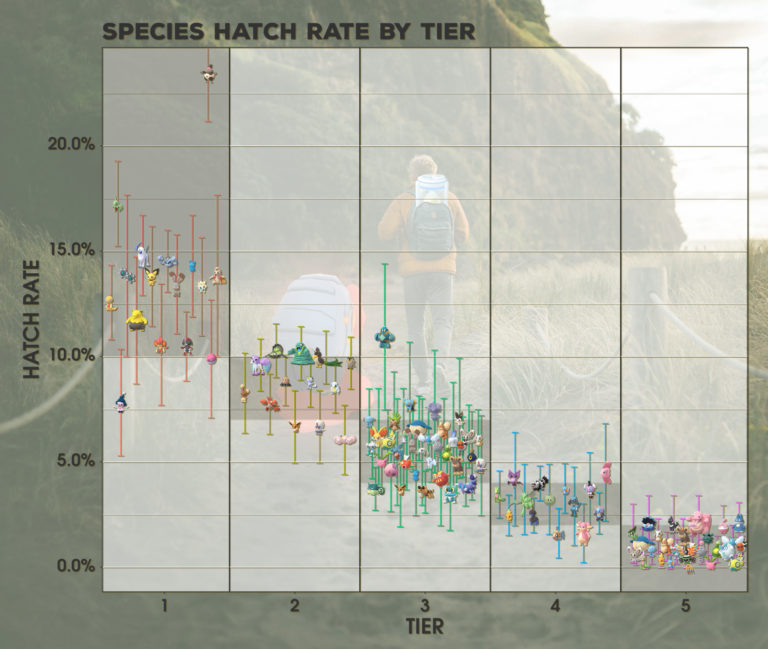Open information and transparency regarding loot boxes is important when trying to establish trust between a game publisher and the user base. But as it turns out, Niantic’s recent efforts have been more insidious than insightful.
According to a post by The Silph Road, a group dedicated to the analysis of code and content within the Pokémon GO mobile app, the hatch rates for eggs in-game are far less appealing than they may seem. While the recently implemented menu will show users what Pokémon CAN hatch from each egg, organized by a five tier system of rarity, users are finding that the odds of getting anything above a three-star odds are dishearteningly unlikely.
Take a look at the chart below. With information from thousands of egg hatchings, The Silph Road has organized the viewed odds into this chart. At first glance, everything makes sense. The lower the tier, the more likely to be what hatches.

One thing we noticed was a few odd outliers. Vullaby appears to be significantly more likely to appear compared to other Pokémon of the tier 1 variety, while Gollet is listed as a tier 3, despite having odds more akin to that of a tier 2 Pokémon. The group claims that some strange numbers like Gollet are possibly the result of insufficient data, Vullaby itself does raise some concern.
We’re also a bit discouraged by the numbers in general. A fifth-tier Pokémon has about a two percent chance of hatching from eggs, with about a five percent increase for each tier below that.
Either way, we trust The Silph Road’s data. The group has existed in some capacity since Pokémon GO’s launch and has been providing valuable data to players since. They explain their math in their post about this issue, but we’ll save you the mathematical babble.
This has revitalized the discussion regarding how Niantic has been presenting information regarding the randomized content. At it’s core, egg hatching is a form of loot box, an already controversial form of monetization. While players cannot buy eggs, they can buy incubators to assist in hatching these eggs. Despite its direct involvement with microtransactions, there is still not very much information about the eggs and what to expect from them.
The reason game publishers never want to reveal the odds on their loot boxes is because if players knew just how unlikely it would be getting what they want, they wouldn’t invest in them. At it’s worst, its intentionally deceitful, at best, it’s disrespectful to the players. We hope Niantic makes a more genuine effort toward the odds. Until then, maybe don’t put any money toward incubators.

